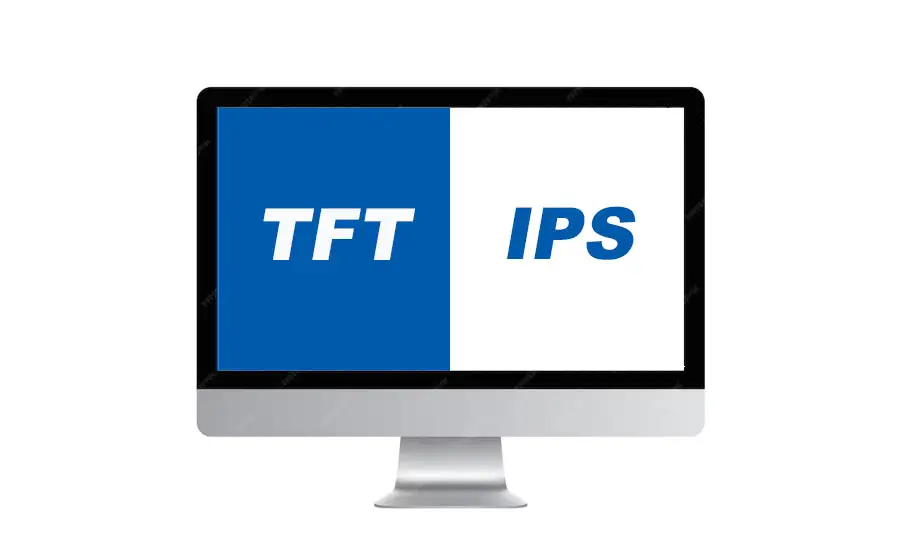What’s the Difference Between TFT and IPS?
- TFT refers broadly to LCD panels like TN or VA. They’re affordable and fast, but tend to lose color and brightness when viewed off-center.
- IPS is a type of TFT LCD engineered for wide viewing angles, richer color, and consistent brightness—even from off to the side.
In simple terms: IPS looks better from more angles.
Why People Prefer IPS
1. Viewing Angle Matters
Ever seen a display looking washed out behind someone? That’s TFT for you. IPS keeps the colors and brightness intact—even at sharp angles.
2. Better Color & Contrast
If your device shows charts, alerts, or UI elements that rely on clear distinction, IPS delivers consistent color across the display. TFT often gets muddy or fades faster over time.
3. Easier on the Eyes
IPS displays reduce eye strain—especially when users frequently move around or collaborate. For shared screens, IPS is a more comfortable choice.
Why You Might Stick With TFT
Lower Cost
TFT panels cost less. If you’re building something with tight margins or single-user use, TFT could be sufficient.
Light On Resources
Some TFT panels need less memory and lighter graphics drivers—perfect for smaller microcontroller setups or simple devices.
Faster Response
TN-type TFTs offer quicker pixel response (~2–4 ms) than many IPS screens (~5–8 ms). If motion blur matters, TFT might edge it out.
Should You Upgrade? Ask Yourself These Questions
| Question | If Yes → Go IPS | If No → Stick with TFT |
|---|---|---|
| Will multiple people view at different angles? | ✅ | ❌ |
| Is color fidelity important? | ✅ | ❌ |
| Are you under tight budget constraints? | ❌ | ✅ |
| Do you need very fast display response? | ❌ | ✅ |
| Will you do significant product branding or UI design? | ✅ | ❌ |
Things to Consider Before Switching
Compatibilité des Interfaces
TFT and IPS modules may use different connectors or timings (parallel RGB, MIPI, LVDS). Make sure your board can talk to the new panel correctly.
Power & Backlight Differences
IPS touchscreen modules often need steady backlight voltage and more stable power rails. Confirm whether your power design can meet those requirements.
Mechanics & Dimensions
Check if the IPS module fits the same cutout, has the same mounting holes, and contains compatible connector pinout. Physical mismatches are common.
Software & Touch Calibration
Even with identical resolution, color mapping and touch sensitivity may differ on IPS. Plan to rework your initialization code or look-up tables.
Real User Stories
- On display forums, users switching to IPS noticed instant visual improvements—less guesswork on screen selection and a more “premium” feel.
- In embedded dev communities, programmers report easier UI debugging and visual consistency after the move.
- Designers note that IPS delivers better uniform image quality when enclosures are backlit or shown near windows.
Foire aux questions
Q: Will IPS eliminate glare?
Not by itself. Glare mainly comes from the front glass surface—not the panel type. Anti-glare coatings or optical bonding help reduce reflection.
Q: Is IPS more energy-hungry than TFT?
Slightly—mostly due to brighter backlight requirements. With efficient LED dimming and smart UI design, the difference may be minimal.
Q: Can I reuse my existing TFT firmware?
Partially. You might need tweaks for frame sync, color order, and touch calibration—but many display libraries support both.
Q: Are IPS replacements easy to find?
Yes, IPS panels are offered by major LCD module makers like LG, BOE, AUO, and others. Just ensure you pick a long-life vendor for production.
Q: Will it complicate supply chain management?
Not too much—IPS modules are popular and broadly supported. Just confirm your part numbers stay stable over time.
Final Takeaway
Upgrading from a standard TFT screen to IPS makes sense if you care about visuals, wide visibility, and user comfort. It’s particularly useful for multi-user displays, branded interfaces, or situations where screen consistency matters.
If you’re building something compact, cost-sensitive, or single-user, staying with TFT may be just fine.
Whichever route you choose, make sure the panel suits your power budget, hardware interface, and user expectations. A smooth screen experience is always worth the extra effort.

